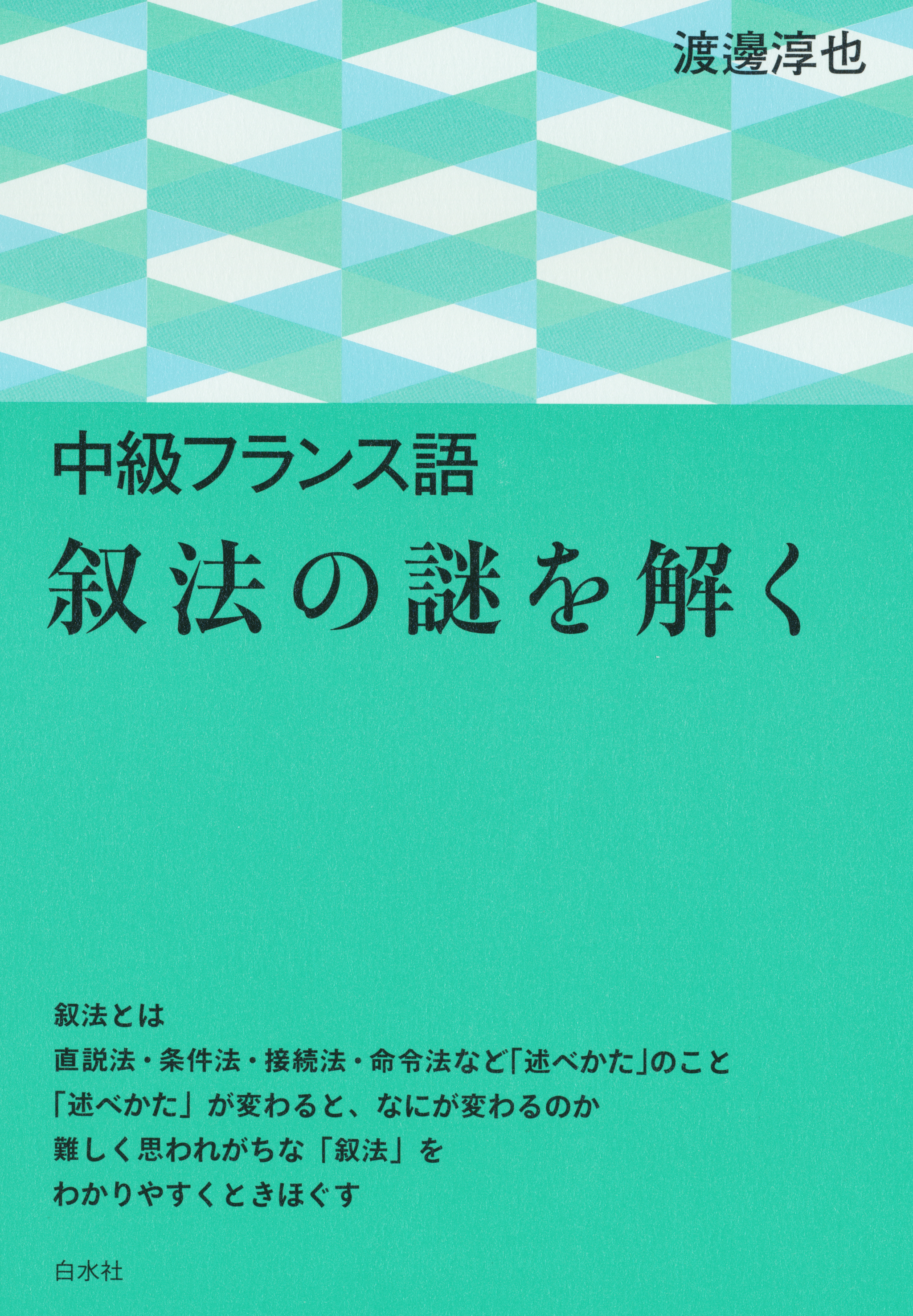
Title
Intermediate French Series Johō no nazo wo toku (Solving the Mystery of Mood)
Size
181 pages, 127x188mm
Language
Japanese
Released
May 11, 2018
ISBN
9784560087725
Published by
HAKUSUISHA
Book Info
See Book Availability at Library
Japanese Page
This book mainly targets the mood (mode) of French verbs. Since it is a pedagogical text in the Intermediate French Series, I have attempted to distill my research results into the simplest possible form. The book’s rather overambitious title is inherited from the “Solving the Mystery” series, which also includes Solving the Mystery of Tense by Hidetake Imoto and Solving the Mystery of Articles by Ryo Oda.
Generally, in European languages, mood is a morphological category of verbs, along with tense, voice, and person. The moods of the French language, which include the indicative (indicatif), conditional (conditionnel), and subjunctive (subjonctif), pose one of its biggest challenges to both learners and researchers.
With respect to the conditional mood, I try to explain its various rules of use in a consistent manner using the concept of “branching time” (temps ramifié), which represents the flow of time as continuously branching into different possible worlds (mondes possibles) in which events unfold differently depending on whether or not a particular proposition comes to pass. The concept of branching time, which originates in the works of philosophers such as Jaakko Hintikka and Saul Kripke, is easier to understand when explained as a device for generating “parallel worlds,” a familiar convention in novels and movies.
To explain the subjunctive mood, I depart from the traditional idea of the subjunctive as an idiosyncratic or “marked” mood for suspending an assertion, adopting instead the inverse idea that the subjunctive is the inherent form in a subordinate clause, while the indicative is the idiosyncratic mood that conspicuously strengthens the assertion. According to this idea, the subjunctive mood is defined negatively as a case in which no assertion is made. This approach permits, for example, a consistent explanation for the phenomenon, which in the past was deemed highly exceptional, whereby the verb inside the que... clause at the beginning of a sentence is put in the subjunctive mood no matter how assertive the meaning of the sentence as a whole. This is because the position at the beginning of a sentence is the position of a theme (thème), where no assertion has been made yet.
In addition to conditional and subjunctive moods, this book clarifies modal verbs (verbe modal), a class of verbs that represent the speaker’s judgment, by applying the same concepts used to explain the conditional and subjunctive moods. In particular, the concept of branching time, which is used to explain the conditional mood, is able to capture how modal verbs such as devoir, falloir, and pouvoir participate in judgments of truth or falsity by discarding the temporal orientation and considering only the proposition and the branches to its negation.
(Written by Jun-ya Watanabe, Associate Professor, Graduate School of Arts and Sciences / 2019)



 Find a book
Find a book


